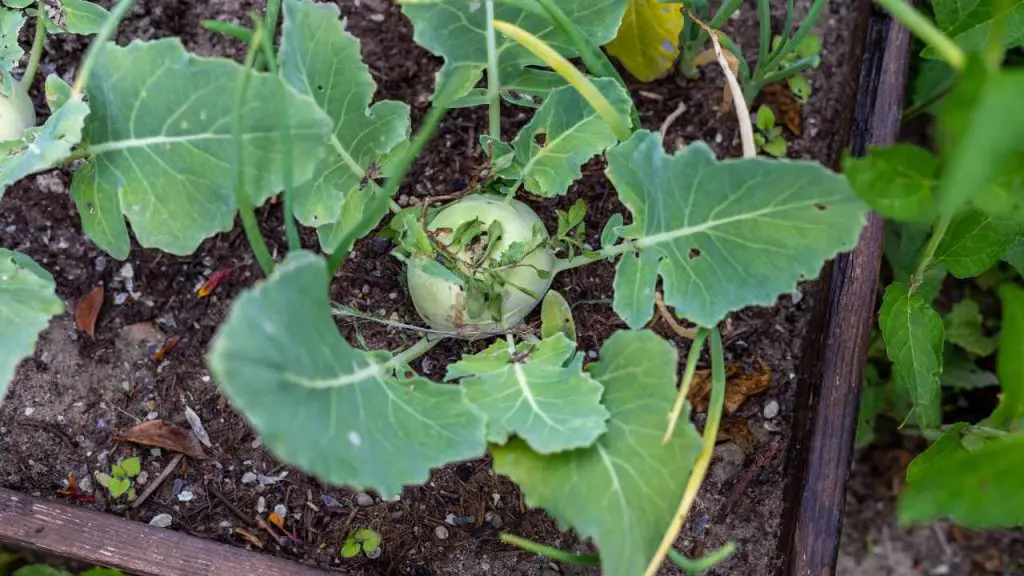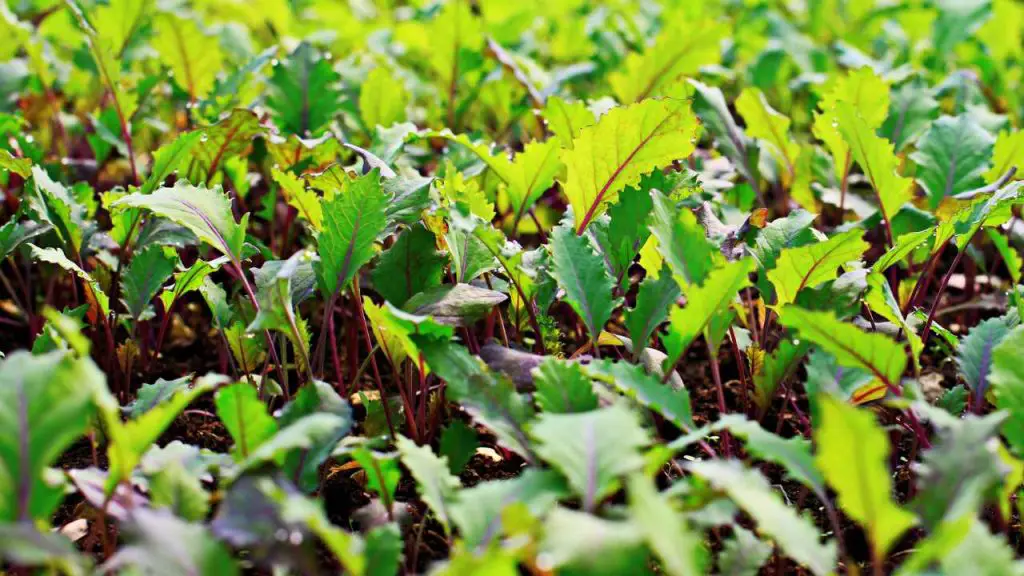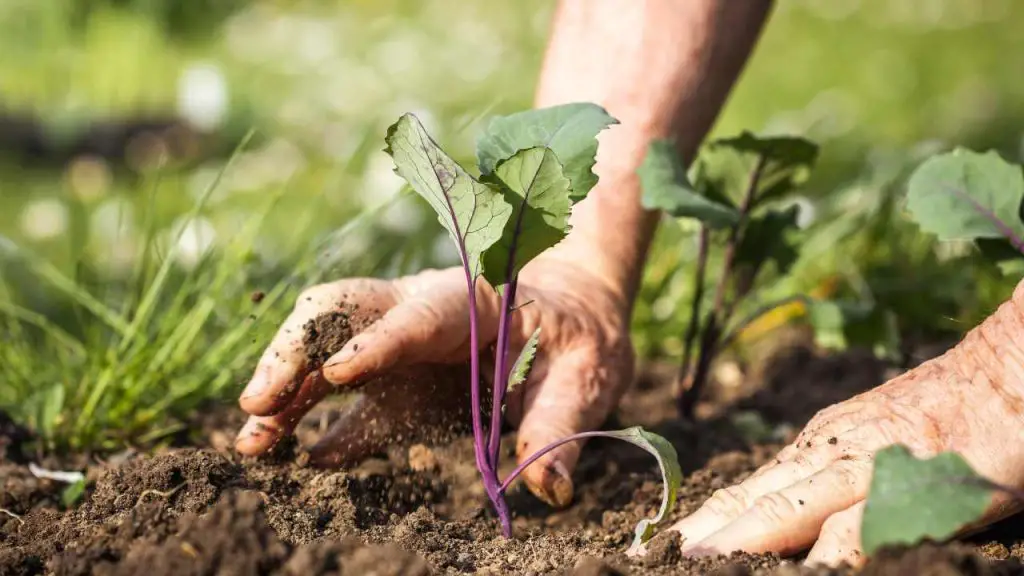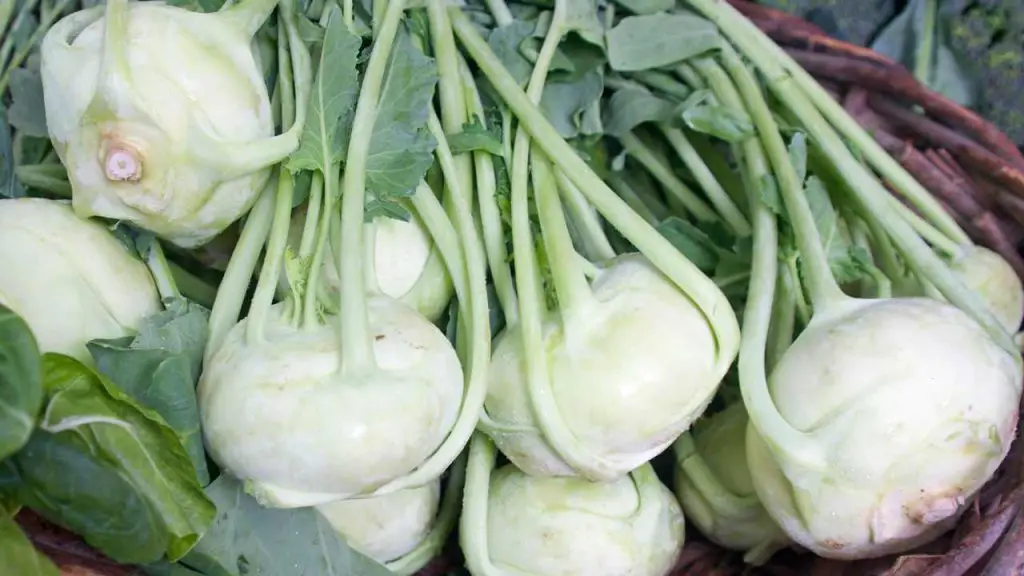Cabbage and other leafy green vegetables are great for health. Doctors and physicians do recommend these for a variety of reasons. These are useful for the diet, as well as you will improve your health.
When not having cabbage, gardeners look for the near relative to the cabbage. Well, there is a close alternative to the cabbage. It is Kohlrabi. It is also known as a German turnip. Today we are going to tell you how to grow kohlrabi from seeds.

Kohlrabi plants
Kohlrabi is a vegetable plant that belongs to the Brassicaceae family, which also includes other vegetables such as broccoli, cauliflower, and cabbage. It is grown for its swollen stem, which is edible and can be eaten raw or cooked.
The kohlrabi plant has a short stem that grows just above the ground, with a large bulbous portion at the base. The stem is topped with large, dark green leaves that are slightly crinkled and resemble collard greens.
The bulbous portion can range in color from pale green to purple, depending on the variety, and has a slightly sweet and mild flavor. The purple kohlrabi plant is quite a rare variety. It is difficult to find, as compared to the other variety.
Kohlrabi needs organically rich soil, but well-drained soil to grow well. It is a cool season crop. It can grow in partial shade, but full sun is necessary for good growth. It is typically planted in the spring or fall and takes about 50-60 days to mature.
There are many benefits of growing kohlrabi plants in the garden. Well, some of the important ones are as follows:
Nutrition Value
Kohlrabi is a nutritious vegetable that is low in calories and high in fiber, vitamin C, and potassium. Planting kohlrabi in your garden can provide you with a healthy and tasty addition to your meals. It gets you important minerals that are very important for health.
Easy To Grow
Kohlrabi is relatively easy to grow and can be grown in a variety of soil types. It can also be grown in containers, making it a great option for those with limited garden space. You just have to make sure it gets relatively good care, then you are good to go.
Fast Growing Plant
Kohlrabi is a fast-growing vegetable that can be harvested in as little as 50-60 days after planting. This makes it a great option for those who want to see quick results in their garden.
On average it takes 55 days. In the meantime, you would be able to enjoy its plantation and growth.
Versatile Use
Kohlrabi can be eaten raw or cooked, making it a versatile vegetable that you can easily use in many dishes. You can use it in soups, salads, stews, stir-fries, or roasted as a side dish. In short, you can enjoy this vegetable in a variety of ways.
Low Maintenance
Kohlrabi is a low-maintenance plant that requires minimal care. It is resistant to pests and diseases and does not require frequent watering. Once planted in good soil, you would see that it is growing well, as it is harvested in a short period of time.
Sustainable Plant
Planting kohlrabi in your garden can be a sustainable way to get fresh, locally-grown produce. It can also help reduce your carbon footprint by reducing the amount of energy required to transport produce from distant locations.
Overall, planting kohlrabi plants can provide you with a nutritious, easy-to-grow, and versatile vegetable that can be enjoyed in a variety of dishes. Moreover, it is not so much expensive.
How To Grow Kohlrabi From Seeds?

You can grow kohlrabi from seeds in a very simple and easy way. You just have to follow the following basic steps:
Choose A Right Location
Kohlrabi thrives in cool weather and prefers well-drained soil. Choose a sunny or partially shaded location that receives at least 6 hours of sunlight each day. Usually, it can be grown during the whole year, but in the winter it grows exponentially.
Prepare The Soil
Loosen the soil by tilling it 8 to 10 inches. Add compost or manure to it. This will improve the soil structure and provide nutrients for the kohlrabi. Make sure that the soil is well drained. The excess water will cause root rot in the kohlrabi plants.
You can use simple gardening soil or potting soil. make sure it is a balanced soil. There is no excess of sand or any other material.
Plant The Seeds
Plant the kohlrabi seeds about ¼ inch deep and 2-3 inches apart. Rows should be spaced 12-18 inches apart. Cover the seedlings well with the soil. make sure there is a thin of soil on the seeds. Also, make sure that you have provided water for the seeds.
Thin The Seedlings
Once the kohlrabi seedlings have grown to about 2 inches tall, thin them to about 4-6 inches apart. This will give the remaining seedlings more space to grow and develop. You can thin them by removing the plants which are damaged or that are not healthy.
This will provide a good space for the kohlrabi plants to spread and grow well. Make sure these are growing well. You can keep a keen eye on their growth.
Taking Care Of Kohlrabi Plants

Kohlrabi is a versatile and nutritious vegetable that is relatively easy to grow. Here are some of the important tips for taking care of kohlrabi plants:
Planting Kohlrabi Plants
Kohlrabi grows best in cool weather, so it’s best to plant the kohlrabi in late summer or in the early spring. Plant the seeds quarter to half an inch deep, spacing them 4-6 inches apart. This plant grows well in the cooler climates
Watering
Kohlrabi plants require consistent moisture to thrive, so water them deeply once a week. Be careful not to overwater, as this can lead to rot and disease. Just make sure the moisture is intact.
You can check the moisture by checking the upper layer of the soil. If the moisture is below one inch of the upper layer, then water it.
Fertilizing Kohlrabi Plants
Kohlrabi plants benefit from regular fertilization, so apply a balanced fertilizer every 3-4 weeks. You can use any of the balanced fertilizers with a proportion of 2 – 2 – 2. Just make sure that there are no excess fertilizers.
Pest And Disease Control
Kohlrabi is susceptible to pests like aphids, cabbage worms, and flea beetles. Use organic pest control methods like handpicking, spraying with neem oil, or introducing beneficial insects like ladybugs. Or you can consult with the local horticulturists.
The same goes for the diseases kohlrabi can face. The fungus can attack it which can result in black rot and other problems. Make sure you look for the symptoms and get remedial actions on time.
Keep Reading
- How To Grow Cherry Tomatoes From Slices
- How To Grow Lots Of Ginger In Containers
- 20 Best Vegetables To Grow In Buckets
Harvesting And Storing Kohlrabi

Kohlrabi is a cool-weather crop usually harvested in the late fall or early winter. Here are some tips for harvesting and storing kohlrabi:
Harvesting time
Kohlrabi is ready to be harvested when it reaches the size of a tennis ball or larger. To harvest, use a sharp knife or pruning shears to cut the stem of the kohlrabi just above the soil level. Be careful not to damage the plant or any neighboring plants while harvesting.
Cleaning The Harvested Kohlrabi
Once harvested, remove any dirt or debris from the kohlrabi. You can do this by gently brushing the surface of the kohlrabi or by rinsing it under running water. Be gentle n handling it, as it may get damaged and you might not be able to store it or it can go in vain.
Storing The Kohlrabi
Kohlrabi can be stored for up to several weeks if kept in a cool, dry place. Remove any leaves or stems attached to the kohlrabi, as they can draw moisture away from the root. Store the kohlrabi in a plastic bag or wrapped in a damp towel to keep it from drying out.
Kohlrabi can be refrigerated for up to a week. Store the kohlrabi in the vegetable crisper drawer of your refrigerator, wrapped in a damp towel or plastic bag. In this way, you can enjoy it once it is harvested.
Pluck the kohlrabi according to your need for a maximum of a week. It will provide space for other kohlrabi plants to grow.
In a nutshell, kohlrabi is a vegetable that is not much known but it can easily compete with any of the leafy green vegetables. As these vegetables are quite common, and there is a shift towards healthy eating so kohlrabi is a great choice for that reason. You just have to plant it. Even growing from the seeds will get you kohlrabi yield an average of 55 days.
